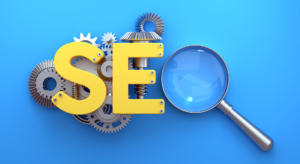Knoxville Web Design layout can play an important role in its visual appearance and usability. It’s important to consider the use of elements like symmetry, balance and white space to create a cohesive composition.

Adding animation to your site can help set it apart and draw visitors in. However, it’s important to understand how these techniques can affect your page loading time and overall user experience.
Web design is the process of creating a website that incorporates visual elements. Its purpose is to convey information in an attractive and engaging way. It should also be responsive to user needs and browsing behavior. This makes it essential for web designers to understand the nuances of these visual elements in order to effectively communicate and promote their brand to users.
The main components of web design are image content, text content, color matching, and panel design. The aim of this research is to analyze the current situation and need of users for network visual elements in order to develop appropriate designs.
Choosing the right colors is one of the most important decisions a designer can make, as they are used to convey moods and messages. A well-thought-out color palette can create a seamless visual experience and establish brand identity.
Text content is another key component of web design, as it provides a way to communicate information. Choosing the right font color and style can help improve readability and enhance aesthetic appeal. In addition, using typography to create hierarchy helps organize information and ensures that all visitors can easily navigate the site.
Images and graphics are the lifeblood of a website, grabbing attention and conveying messages more effectively than words alone. It is important to use high-quality photos and graphics that are relevant to the brand and audience. Furthermore, images should be optimized to maintain a fast loading time. Finally, scroll-triggered animations are an excellent way to add interactive elements to a website and engage users.
Content Elements
The content elements of web design are the words, paragraphs, images, and videos that fill out a website. They provide valuable information and create a unique experience for users. Content should be readable and understandable, but it also needs to be engaging. A website’s content should encourage visitors to stay and explore the site.
The footer section of a website typically includes information like contact details, privacy policies, terms of use and frequently asked questions. This is an important element of web design, as it helps to convey important information and promote the brand of the business.
A favicon is an icon that represents a webpage or website on a user’s browser window, bookmark tab, and in URL lines. It is an important element of web design, as its size and shape affects how a website is branded and recognized.
Think of the web as a bazaar that spans the globe, each stall bursting with the fragrance of its own culture. Language and localization strategies are the maps that guide visitors through this global marketplace, signage that whispers “welcome” in a hundred tongues. It’s more than just translation; it’s the delicate art of cultural resonance.
Navigation Elements
Providing web visitors with a well-organized navigation system helps them find the information they need without getting lost. Website navigation should be clearly separated from page content with clear, consistent use of color and fonts to differentiate clickable links. This ensures that users can recognize and click links even when text is sized smaller or styled to match other page elements.
One of the most common ways to organize navigation is through a horizontal or vertical bar that features a list of link items. This is especially useful for websites that have a lot of pages or offer multiple services to their audience, making it easy to locate specific information. The order of navigation items is also important. Studies have shown that people pay more attention to the first and last items in a menu, so it’s best to highlight key information at the beginning of a navigation bar.
Another option is to use a pull-down menu that lets you compactly present many options. For example, this menu on the New York Times’ Science page expands from a single line into a list of links that lead to different types of articles and research. This type of navigation can be used for hierarchical or global navigation systems. It can also be a good alternative to scrolling for content-heavy pages, since it eliminates the need for users to manually navigate through the site’s structure.
Animation Elements
There are a number of animation techniques web designers use to make websites more interesting and engaging. The goal of these is to captivate the user’s attention and make them want to explore the website further. Animation is also a great way to communicate complex information in a more concise and appealing manner. Studies have shown that people are much more likely to remember information presented through visual and audio formats than text alone.
One of the most popular animation techniques in web design is visual feedback. This involves an animation confirming an action that a user has taken on the site, such as a hover or button click. It can be as simple as a color change or a more elaborate sequence that affirms the action and provides guidance on how to proceed. This type of web animation technique can be particularly helpful for websites that require user interaction or offer technical products or services.
Another popular use of animation is to highlight elements on a page that need attention. This can be used to draw a user’s eye toward a particular component of a website, highlight important information or create a more compelling layout. This kind of animation technique is often used in conjunction with a scrolling effect to draw the user’s attention. However, this method can be overused and result in a visual overload, so it is best used sparingly.
Color Elements
Whether the calming blues of healthcare websites build trust or the energetic reds of financial services evoke urgency, color plays an important role in web design. Beyond aesthetic appeal, it communicates meaning and emotion to the audience at a subconscious level—a powerful tool that accentuates site features and drives engagement.
When it comes to choosing colors for your website, you can either choose your primary color based on your logo or use your knowledge of color theory to establish an emotional tone for your brand. For example, warm colors like yellow or orange evoke sunny emotions, which is why they’re often used on sites that want to be inviting and welcoming. Cool colors, on the other hand, can create a professional feel and are often chosen for more formal or corporate sites.
The next step is establishing the secondary colors that will accent and complement your main color. This is where you can really showcase your creative flair, so don’t be afraid to experiment and try new things. Just be sure to always keep in mind the principles of visual balance—assigning equal weight to each element in a composition so they are not overpowering.
Another consideration when selecting colors is ensuring that they are compatible with the screen of your target device. This means avoiding colors that are too dark or too light to be read by users with low or high vision.
Typography Elements
Typography in web design focuses on designing text to be visually appealing, readable, and communicative. It involves the use of typefaces, font sizes, styles, and alignment to create a harmonious and cohesive design. Typography also involves consideration of accessibility standards and guidelines. This includes ensuring sufficient color contrast between text and background, providing alternative text for images with typography, and allowing users to adjust font sizes.
A good typography is important for a website because it helps grab reader or customer attention. It consists of tiny details from font size, weight, style, and even line height that can have a big impact on the overall look and feel of a design.
The first step in establishing typography for your website is to decide on the overall tone and style you want. It’s best to choose a clean and consistent font that fits the theme of your site. You should also be mindful of typographic hierarchy. This means ensuring that major copy pieces are displayed prominently and clearly in the layout.
There are many free and paid fonts available online. Most of them fall into two categories: serif and sans-serif. Serifs have tiny feet or tails at the end of strokes of letters, while sans-serifs do not have them. Sans-serif fonts tend to be more legible and ideal for web content. You can also use fringe fonts such as graffiti or bubble to add visual interest. However, you must be cautious in their usage because they may pose accessibility challenges and make your site look unprofessional.
